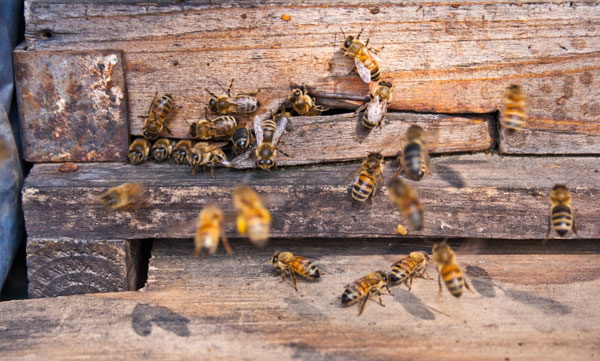|
Apiculture Museum - What's all the buzz about?
Honey in our tea, honey in our pale ale, we consume it like it couldn't possibly give us a hangover. But how often do we consider the striped buzzers who make the stuff? Hidden away in the Beijing Botanical Gardens, the Apiculture Museum pays dutiful homage to bees and the sweet syrup they produce. But be prepared to get there. After trekking out to expansive gardens in the northwest outskirts of the city, you'll have to put in another 30 minutes by foot to arrive there. Complicating matters, the Apiculture Museum's not any maps or signs. Visitors need to figure out that it's just west of the Temple of the Reclining Buddha (Wofo Temple). The museum is held within a compound where bees hold center stage. A honey quality testing center and the key lab of pollinating insect biology are there, as are several active beehives around the site. The four-room museum itself is a reasonably low-key affair. Those who require interactive exhibits to keep them alert may end up catching some Zs instead of learning more about bees. Most information is conveyed through bright poster displays: informative for readers of Chinese script, but less so for others. You can figure out from pictures that honey, bee pollen, and even bee stings can have health benefits, but without a translator the details will be a mystery. In the first room, a number of bee species are on display, carefully pinned to sheets of graph paper for your perusal. The hex-themed architectural wonders of different beehives lay vacant behind sheets of glass. In another room, a red milk crate, a silver canister and a blue dog house turn out to be beekeepers' tools of the trade. Photos on the wall are more likely to send the pulse abuzz. Images of half formed bee pupas wriggling in their honey filled capsules make you wonder how we can be sure our honey doesn't have invisible pupas swimming in it. A picture of fried pupas on a plate with decorative garnishes proclaims the gourmet possibilities of honey bees. Photos of people showcasing grotesquely purple lesions on their lips or tongue would turn the stomach if not accompanied by miraculous recovery photos after patients applied (you guessed it) …honey! If you're not too queasy from those pictures, you can try some honey products from the store just outside. A large variety of made-on-site honey and bee pollen products await purchase. But if honey's not on your shopping list and you don't have a particular interest in bees or bugs, the Apiculture Museum doesn't need to be on your Must See list. But if you've already come to the botanical gardens to enjoy the spring flowers, it's worth poking your head in for a look (and there isn't any additional fee, which is nice). Apiculture Museum How to get there: From Bagou subway station exit A (Line 4) take a taxi to the Beijing Botanical Gardens. The Apiculture Museum is west of Wofo Temple. Fee: none |
| Copyright ? China.org.cn. All Rights Reserved 京ICP证 040089号 京公网安备110108006329号 网络传播视听节目许可证号:0105123 京公网安备110108006329号 京网文[2011]0252-085号 |

 0
0 








Go to Forum >>0 Comment(s)